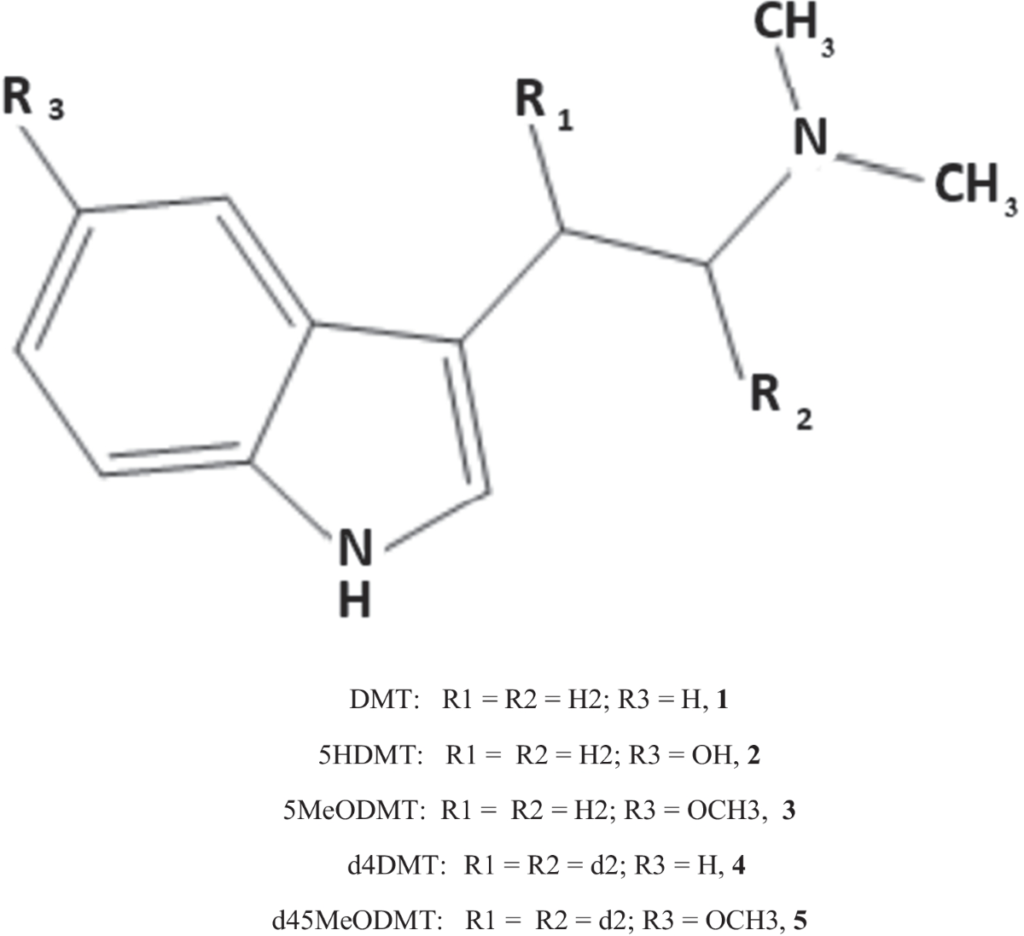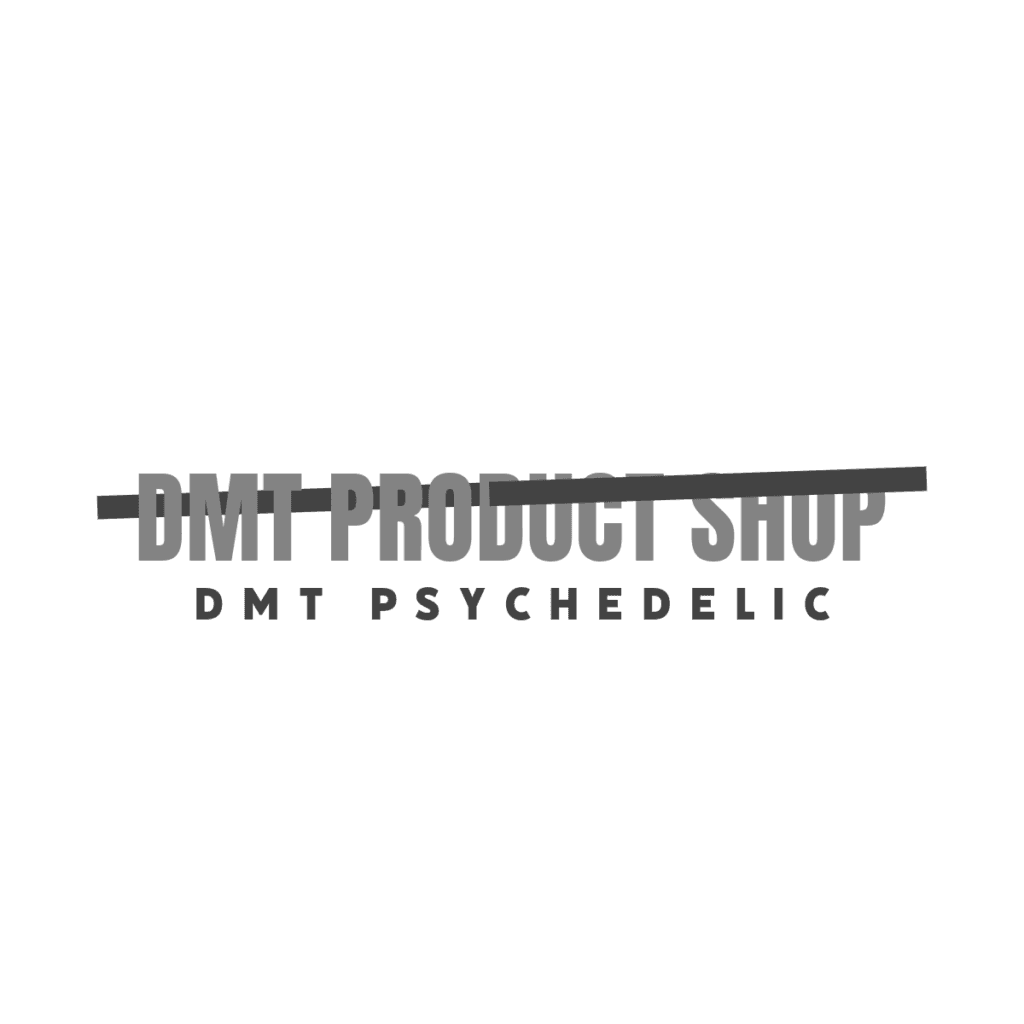Uncategorized
Understanding DMT: A Comprehensive Guide to Its Effects and Uses

What is DMT?
DMT, or Dimethyltryptamine, is a powerful hallucinogenic compound that belongs to the tryptamine class of substances. Chemically, it is closely related to serotonin, a neurotransmitter that plays a key role in regulating mood, cognition, and perception. DMT is known for its intense psychedelic effects, which can provoke profound alterations in sensory perception, emotional state, and consciousness. This substance occurs naturally in various plants and animals and is traditionally linked to various shamanistic practices in different cultures around the globe.
Historically, DMT has been utilized in rituals and spiritual ceremonies by indigenous peoples, particularly in South America. In this context, it is often consumed in the form of Ayahuasca, a brew made from the Banisteriopsis caapi vine and other plant ingredients that contain DMT. The use of Ayahuasca is rooted in centuries of traditional knowledge and practice, where it is viewed as a tool for healing, self-discovery, and connection to the spiritual realm.
In contemporary studies, DMT has gained attention for its potential therapeutic benefits, particularly in the fields of psychology and psychiatry. Researchers are exploring its effects on conditions such as depression, anxiety, and PTSD, as it may promote unique insights and emotional releases in those who experience its psychoactive properties. The exploration of DMT’s effects extends beyond therapeutic measures, delving into the realms of consciousness studies and the nature of reality. The compound is often referred to by various names, including the ‘spirit molecule’ due to the deep, sometimes transcendent experiences reported by users during their encounters with it.
Overall, DMT stands out as a significant substance in both the cultural and scientific landscapes, with ongoing discussions surrounding its properties, applications, and implications for human understanding of consciousness.

Photo: Chemical representation of DMT – Image Credit: Springer Nature Link
Natural Sources of DMT
DMT, or dimethyltryptamine, is a powerful psychedelic compound that occurs naturally in various organisms, including both plants and animals. One of the most well-known sources of DMT is the plant combination used to create Ayahuasca, a traditional brew of indigenous Amazonian cultures. This brew primarily incorporates the Banisteriopsis caapi vine, which contains MAO inhibitors that allow DMT-containing plants to produce psychedelic effects when ingested orally. The commonly used companion plants are Psychotria viridis or Diplopterys cabrerana, both of which are rich in DMT.
Another significant plant source of DMT is Mimosa hostilis, a tree native to South America. The root bark of Mimosa hostilis contains a high concentration of DMT and has been used traditionally for its psychoactive properties. This plant is often utilized in both Ayahuasca preparations and in more contemporary approaches to DMT extraction, making it a popular choice for individuals seeking to explore altered states of consciousness.
Animal sources of DMT are less common but noteworthy. A prominent example can be found in certain species of toads, particularly the Colorado River toad (Incilius alvarius). These toads secrete a substance known as 5-MeO-DMT from their parotid glands, which has gained attention for its intense psychoactive effects when consumed. Unlike the classical DMT experience, 5-MeO-DMT can produce a more homogenous sense of unity and transcendence, differing significantly in subjective effects.
Ecologically, these natural DMT sources play vital roles in their respective environments. They contribute to the biodiversity and cultural practices of local ecosystems. Indigenous cultures have long utilized these plants and animals not only for their psychoactive properties but also as tools for healing, divination, and spiritual growth. The historical use underscores the significance of DMT in shaping cultural and ecological understandings throughout human history.
Chemical Structure of DMT
N,N-Dimethyltryptamine, commonly referred to as DMT, is a powerful hallucinogenic compound that belongs to the tryptamine family. Its molecular structure is characterized by a tryptamine backbone, which consists of an indole ring and an ethylamine side chain. The specific chemical formula for DMT is C12H16N2, which highlights its carbon, hydrogen, and nitrogen composition. The distinction of DMT among tryptamines largely stems from its unique dimethylation at the nitrogen atom, which plays a critical role in determining its psychoactive properties and interactions within the body.
The indole structure of DMT is closely related to serotonin, a neurotransmitter that significantly influences mood, cognition, and perception. The resemblance between DMT and naturally occurring neurotransmitters implies that it can effectively bind to serotonin receptors in the brain, potentially affecting mental states and altering consciousness. Specifically, DMT is known for interacting with the 5-HT2A receptor, which is a subtype of the serotonin receptor associated with visual and cognitive phenomena during sensory experiences. This interaction is fundamental in explaining the hallucinogenic effects characteristic of DMT consumption.
Furthermore, the chemical structure of DMT allows for rapid metabolism in the body, primarily through the enzyme monoamine oxidase (MAO). This enzyme breaks down neurotransmitters, including DMT, but when DMT is ingested in combination with MAO inhibitors—often found in some traditional brews like Ayahuasca—the compound can exert prolonged psychoactive effects. The interplay between DMT’s structure, its serotonergic nature, and the enzyme’s activity elucidates not only its transient effects, but also its profound influence on human perception and experience.
How DMT Works in the Brain
N,N-Dimethyltryptamine (DMT) is a powerful psychedelic compound that is found in various plants and can also be synthesized in the laboratory. Its effects on the brain are primarily mediated through interactions with serotonin receptors. One of the key receptors involved in mediating the psychedelic effects of DMT is the 5-HT2A receptor. This receptor is part of the serotonin receptor family and plays a crucial role in mood regulation, perception, and cognition.
When DMT is introduced into the system, it quickly crosses the blood-brain barrier, entering the central nervous system. Upon binding to the 5-HT2A receptor, DMT enhances serotonin signaling, leading to profound alterations in perception and consciousness. This interaction essentially results in a reconfiguration of the brain’s neural pathways, as areas traditionally associated with sensory perception and emotional response become more active. Such heightened activity can produce vivid visual and auditory hallucinations, altered sense of time, and a feeling of transcendence.
Research has indicated that DMT may activate specific areas of the brain that are less engaged during normal waking states. For example, the default mode network (DMN), which plays a key role in self-referential thought processes, is notably influenced. When DMT is consumed, the activity within the DMN tends to diminish, subsequently altering an individual’s sense of self and expanding their perception of reality. This disintegration of ego boundaries is often reported by users as a profound and transformative experience.
Additionally, DMT is believed to have implications for neuroplasticity, the brain’s ability to reorganize itself by forming new neural connections. By promoting this process, DMT may offer therapeutic potential for various psychological conditions, although further research is necessary to establish a comprehensive understanding of its mechanisms and efficacy in treatment contexts. The depth of its effects reveals the complexity of the brain’s interaction with this potent substance.
Short-term Effects of DMT
Dimethyltryptamine (DMT) is a powerful psychedelic compound that produces a range of immediate effects upon consumption. Users frequently report intense visual and auditory hallucinations, which are characterized by intricate geometrical patterns, vibrant colors, and even encounters with seemingly sentient beings. These experiences often challenge the user’s perception of reality, leading to a profound cognitive transformation. Individuals may describe their visual experiences as hyper-realistic, sometimes reporting that the visions feel more vivid than ordinary life. This is complemented by auditory alterations, which can include changes in pitch or the perception of sounds that are not present in the physical environment.
Another notable effect of DMT is the alteration of time perception. Many users find that the duration of the experience seems vastly different from conventional temporal experiences. What feels like mere minutes may often translate to hours in the outside world, creating a disorienting sense of time distortion. This altered perception can lead to existential contemplations and reflections on life and consciousness, as users feel disconnected from the constraints of linear time.
Emotionally, the DMT experience can be equally intense. Users report a wide range of emotions, from euphoria to profound introspection. Some individuals confront deeply buried personal issues or fears during their experience, leading to moments of catharsis and self-discovery. It is essential to note that while many users cherish their experiences with DMT, others may encounter challenging psychological states, often referred to as “bad trips.” The unpredictability of these emotional states underscores the need for careful consideration when engaging with DMT. Research continues to explore these immediate effects, examining the compound’s potential therapeutic applications and implications for mental health.
Long-term Effects of DMT
Dimethyltryptamine (DMT) is a powerful psychedelic compound that has garnered significant interest for its profound effects on consciousness and perception. While its short-term effects are well-documented, researchers are increasingly focusing on the potential long-term repercussions associated with DMT consumption. Given its status as a Schedule I substance in many countries, comprehensive research has been limited, but recent studies have begun to shed light on its enduring impact on mental health and overall well-being.
One of the most intriguing aspects of DMT use is the possibility of lasting changes in attitude and perception following experiences induced by the substance. Anecdotal evidence suggests that users may encounter shifts in their worldview or enhanced feelings of connectedness to others and the universe. These lasting alterations in perception could indicate that DMT, although typically short-acting, may have enduring psychological effects. Continued exploration in clinical settings could unravel the relationship between DMT experiences and long-term psychological outcomes.
However, it is essential to consider the risks associated with prolonged use of DMT. While current evidence indicates a low potential for addiction, concerns remain about potential psychological consequences for frequent users, especially regarding the intensity of the experiences. Reports of “bad trips” or overwhelming experiences may lead to anxiety, confusion, or even symptoms resembling post-traumatic stress disorder (PTSD) in susceptible individuals. Further longitudinal studies are necessary to determine which individuals may be at risk for enduring negative effects and to what extent these effects might persist over time.
Overall, while ongoing research continues to examine the long-term effects of DMT, it remains crucial for individuals to approach this compound with caution, acknowledging both the potential benefits and risks associated with its use. Understanding these long-term implications is vital for anyone considering such experiences, as responsible use must be balanced with awareness of mental health consequences.
Potential Therapeutic Uses of DMT
Dimethyltryptamine (DMT), a naturally occurring psychedelic compound, has garnered attention in recent years for its potential therapeutic applications. Numerous scientific studies and clinical trials have explored the effects of DMT in treating various mental health conditions, including depression, anxiety, and post-traumatic stress disorder (PTSD). These investigations aim to assess the efficacy and safety of DMT in therapeutic settings, ultimately shedding light on its possible benefits.
Research into DMT’s impact on depression has yielded promising results. A study published in the journal “Frontiers in Pharmacology” examined the rapid antidepressant effects of DMT administered in a controlled setting. Participants reported an immediate reduction in depressive symptoms following treatment, with effects sustained for several days post-administration. This rapid action is particularly noteworthy compared to traditional antidepressant medications, which often take weeks to show significant improvements.
Further, DMT’s potential use in alleviating anxiety has been supported by studies demonstrating its ability to induce transformative experiences and foster emotional insight. Research indicated that individuals who participated in DMT sessions experienced decreased levels of anxiety and increased feelings of well-being. The introspective journey facilitated by DMT was linked to long-term psychological benefits, suggesting that it may offer a novel approach to treating anxiety disorders.
In the context of PTSD, DMT may serve as a therapeutic adjunct to psychotherapy. A recent pilot study highlighted how individuals with PTSD reported significant reductions in symptoms after undergoing guided DMT sessions. The substance’s ability to help individuals confront traumatic memories within a supportive environment could be instrumental in their healing process.
Overall, while the body of evidence supporting DMT’s therapeutic potential is still emerging, current research illustrates a promising horizon for its use in treating mental health conditions. As scientists continue to examine the intricacies of DMT, its role in psychiatric care may become increasingly defined, paving the way for innovative treatments for those in need.
Safety Concerns and Risks Associated with DMT
DMT, or dimethyltryptamine, is a powerful psychedelic substance that has gained attention for its profound effects on consciousness. However, like any psychoactive compound, it carries certain safety concerns and risks that must be carefully considered. One of the primary physical risks associated with DMT use includes the possibility of adverse physiological reactions such as increased heart rate, elevated blood pressure, and respiratory difficulties. These reactions can be particularly concerning for individuals with preexisting cardiovascular conditions.
In addition to physical concerns, there are also significant psychological vulnerabilities associated with DMT use. The intense and often surreal nature of the experiences can lead to overwhelming psychological responses, including anxiety, paranoia, and agitation during or after the trip. Individuals with a history of mental health issues, such as schizophrenia or bipolar disorder, may be at a heightened risk of experiencing exacerbated symptoms when using DMT, as it may trigger latent ideations or psychosis. Therefore, it is crucial for individuals with such backgrounds to approach DMT with extreme caution or refrain from its use altogether.
Moreover, the context in which DMT is consumed plays a vital role in determining its safety profile. Responsible use involves ensuring that one is in a supportive and controlled environment, preferably under the guidance of experienced individuals or practitioners. This approach can help mitigate the potential risks associated with overwhelming psychological experiences. It is also important for users to be aware of contraindications, such as interactions with certain medications, particularly those that affect serotonin levels in the brain, as these combinations can lead to serious health complications.
Ultimately, understanding the safety concerns and risks linked with DMT is essential for informed use. Individuals should weigh these considerations carefully against the transformative experiences DMT may offer.
Conclusion: The Future of DMT Research and Understanding
As we conclude our exploration of N,N-Dimethyltryptamine (DMT), it is essential to reflect on the multifaceted nature of this powerful psychedelic compound. Throughout the article, we have delved into its historical context, pharmacological properties, and potential therapeutic applications, as well as the risks involved when using DMT. Notably, DMT’s unique ability to alter perception and consciousness has spurred a growing interest within both scientific and recreational communities.
The future of DMT research appears promising, particularly in the realm of mental health treatment. Studies suggest that DMT could hold therapeutic value in addressing conditions such as depression, anxiety, and PTSD. The initial findings indicate that DMT may facilitate profound insights and emotional healing. However, comprehensive research is needed to substantiate these claims and to determine appropriate treatment protocols.
Moreover, understanding the risks associated with DMT usage is paramount. While many anecdotal experiences praise its benefits, rigorous scientific scrutiny will serve to demystify potential adverse effects, interactions with other substances, and long-term implications of use. Institutions and researchers must approach DMT from a responsible standpoint, ensuring informed discourse that prioritizes the safety and well-being of both participants and the broader community.
As we look to the future, the integration of DMT into mainstream scientific inquiry may foster a deeper understanding of consciousness and the human experience. Advocating for responsible research and usage, while balancing curiosity with caution, will be vital in navigating this complex landscape. Ultimately, the ongoing investigation of DMT’s myriad effects will contribute significantly to the broader conversation about psychedelics and their roles in society, medicine, and spirituality.
